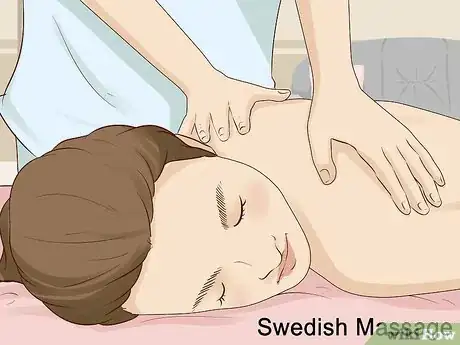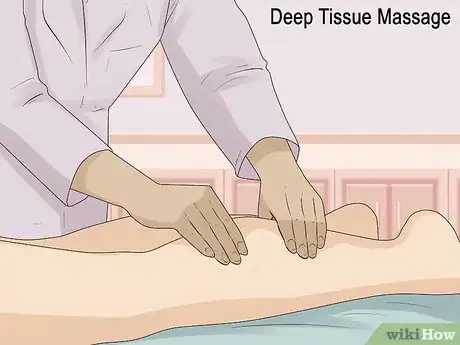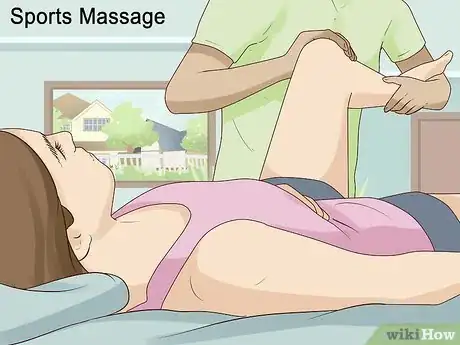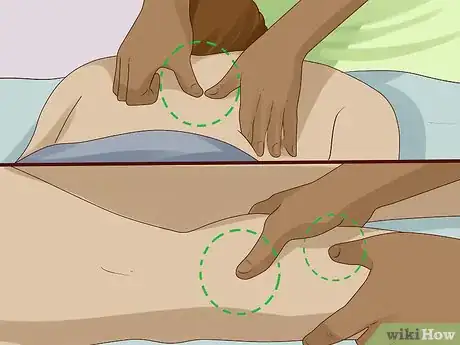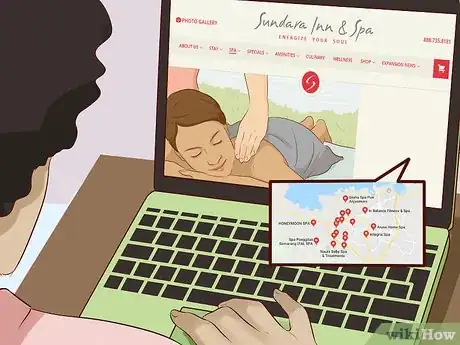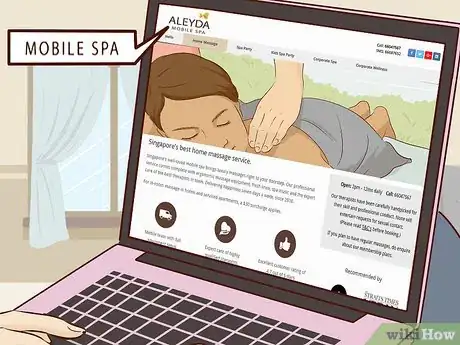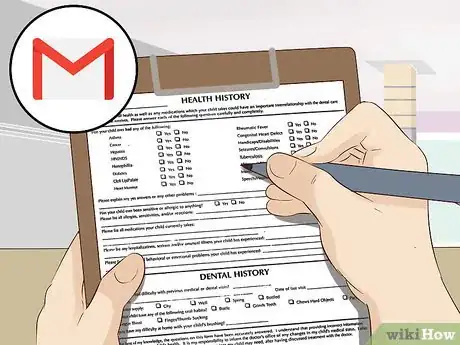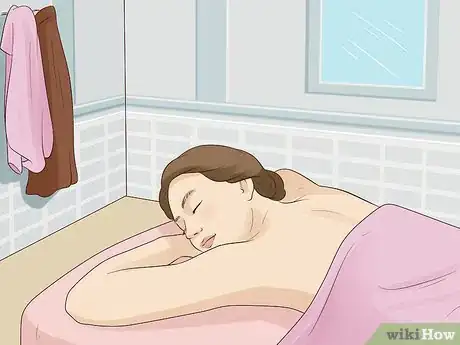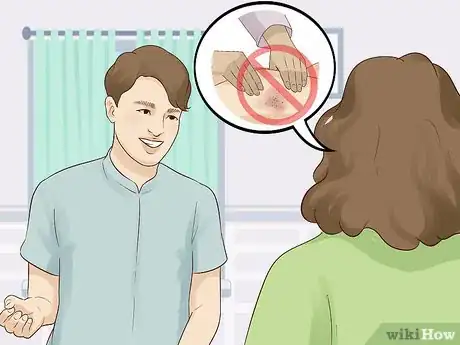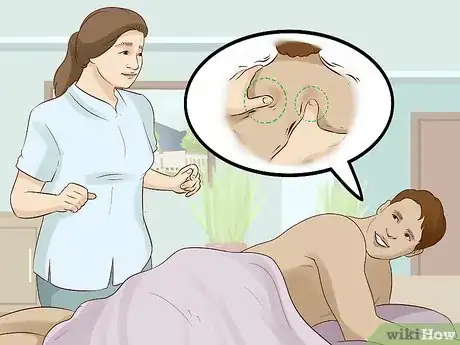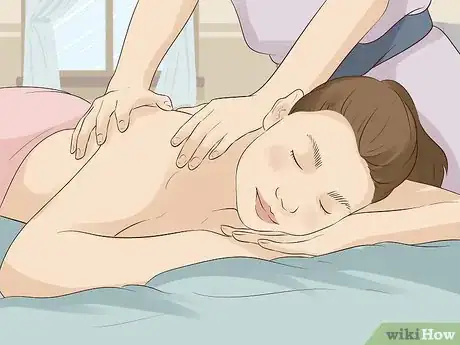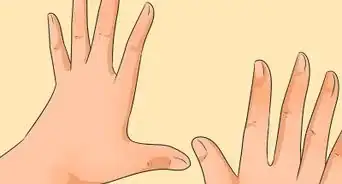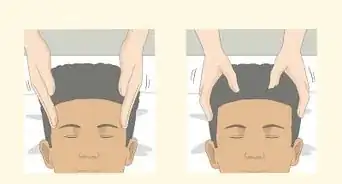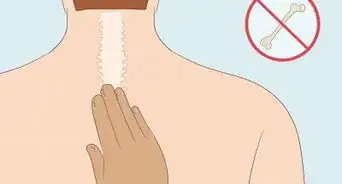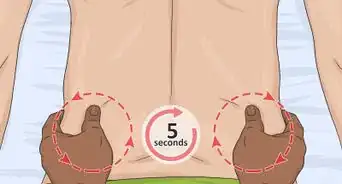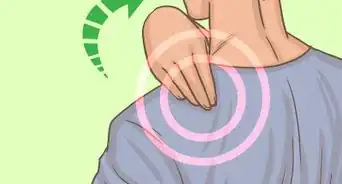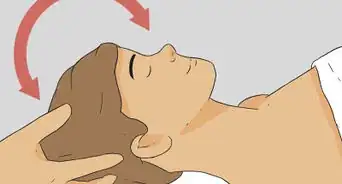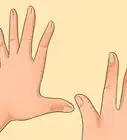This article was co-authored by Will Fuller. Will Fuller is a Certified Massage Therapist and Wellness Educator working in San Francisco, California. Will has worked with the Sports and Recreation Center at the University of California, San Francisco (UCSF), taught sports in England, Kenya, and Kuwait, and is now affiliated with the Chiro-Medical Group. He was trained in physical rehabilitation under a program founded by Dr. Meir Schneider. He has a Bachelors in Sport Science and a Post-Graduate Certificate of Education in Physical Education from Southampton University.
There are 7 references cited in this article, which can be found at the bottom of the page.
This article has been viewed 13,919 times.
Massages are a common treatment for sore, stiff muscles and other body pain, but making your appointment can be overwhelming due to the variety of options available. If you want to have a relaxing spa experience, you can book a massage at a local spa or with a massage therapist. To make an appointment, you’ll pick your type of massage and contact the business. Then, all you have to do is arrive to the appointment prepared for relaxation.
Steps
Picking a Type of Massage
-
1Select a Swedish massage to soothe sore or stiff muscles. The Swedish massage uses long, stroking motions and kneading to loosen stiff muscles and stretch out any knots or strains. Choose this option for your first massage or if you frequently feel tense or sore.[1]
- Swedish massages can also be helpful for reducing anxiety and increasing circulation throughout the body.
-
2Opt for a deep tissue massage if you have severe muscle pain. This service focuses on the using focused pressure to relieve severe pain and tension throughout the body. If you’re experienced with massages and are dealing with severe pain, choose this massage.[2]
- This type of massage might be less pleasant for beginners and people with arthritis or other forms of chronic pain.
Advertisement -
3Get a sports massage to help prevent muscle and tissue injuries. Sports massages use similar techniques as Swedish massages, but are meant to loosen and activate the muscles most used during sports. If you’re an athlete, runner, or you work out often, consider a sports massage to help stretch and engage your muscles.[3]
- If you’ve previously had a sports injury, be sure to inform the massage therapist before your service. They may have to adjust the service slightly to accommodate more sensitive areas on your body.
-
4Decide on a trigger point massage if you have chronic, localized pain. These are focused massages work on one area that is considered a “trigger” for pain. The service involves kneading and loosening tight muscle fibers in one area of the body. Select this type of massage if you’d recently experienced an injury or are having chronic, dull muscle pain.[4]
- Trigger point massages can involve more discomfort than you’re used to in a regular massage. Be sure to communicate with your therapist throughout the service, and let them know if you experience any pain.
-
5Ask the spa associate for recommendations if you aren’t sure what you want. If it’s your first massage, you might feel a bit overwhelmed by all of the options. When you contact the salon, let them know that you’re having trouble choosing, and tell them a little bit about your needs. Be sure to include your previous massage experiences, budget, time constraints, and what you’d like to get out of the massage.[5]
- The spa associate or therapist should be able to recommend an appropriate massage for your needs.
- For example, if you’ve never had a massage and are looking for a relaxing experience, they might recommend a 60-minute Swedish massage.
- If you’re a runner who’s looking to rehab your muscles after doing a marathon, but you don’t have a lot of time in your schedule, they might recommend a 30-minute sports massage.
Making an Appointment
-
1Find a reputable spa or massage therapist in your area. Search online for spas in your area, and read customer reviews and testimonials about the services. Check out the prices on the spa’s website or social media accounts, and find their phone number or online booking platform.[6]
- If the spa doesn’t have many reviews, has a lot of negative reviews, or their website looks unprofessional, pick a different spa for your services.
-
2Locate a massage therapist that does house calls for a more private service. If you want to skip the drive to the spa, search for “on demand” or “in home” massage therapists in your area. The process for booking an in-home therapist is the same as booking a spa service, but be sure to specify where you live.[7]
- This is an especially appealing option for people who aren’t able to leave their homes due to limited mobility or chronic pain.
-
3Call the spa to speak to a spa associate about making an appointment. Be sure to call during business hours to make your appointment, and be clear about what you want to book your appointment for. Remember to tell them the name of the service, what time and day you’re available, and the therapist’s name if you have a preference.[8]
- For example, you might say something like, “Hi, my name is Alex, and I want to book an appointment on Thursday for a Swedish massage. I’m available any time after noon.”
- If you’re not sure what kind of service you want, you can say, “Hi, my name is John, and I want to book a massage, but I’ve never had one before. I’m available on Saturday or Sunday mornings before 11 a.m., and I’m a bodybuilder. Would you be able to recommend a massage for me?”
-
4Confirm the details of the appointment before you hang up. As you make the appointment, write down the details on a piece of paper. Repeat them back to the spa associate after the appointment is made to confirm that you have the right information. Remember to include the time, date, service name, and price.[9]
- For example, you can say, “I have an appointment on May 10th at 1 p.m. for a Swedish massage with Anna, and it costs $75. Do I have all of that information right?”
-
5Specify if you would prefer a male or female massage therapist. Don’t be afraid to let the spa associate know if you would prefer a specific therapist. It’s common for guests to requests therapists with good reviews or a therapist of the same sex so that they feel more comfortable. If you don’t have a preference, let them know.[10]
- In general, both male and female massage therapists will have the required strength and abilities to give you a good massage.
-
6Provide the spa with your health history. Most reputable spas and therapists will require you to give them information about your health history over the phone or by filling out paperwork that they will email to you. Include any previous injuries, surgeries, conditions, allergies, and other spa services that you’ve had, like chemical peels, other massages, medical spa services, and cosmetic procedures.[11]
- You may also be required to fill out and sign a release form that protects the spa and therapist in case you fail to tell them about a condition or problem and get injured.
Following Massage Etiquette
-
1Arrive on time for your appointment. The spa or therapist might be running on a tight schedule, and massages can take a significant amount of time. Be sure to leave your home early enough to get to your appointment at the right time, even if there’s traffic. If possible, try to come 5-10 minutes early in case you need to fill out any paperwork.[12]
- For your first appointment, aim to arrive 15-20 minutes early so the spa associate or massage therapist can explain the process for the massage and get you situated in the massage room.
-
2Undress to the point you feel most comfortable. In the massage room, take off your clothes to whatever point you feel comfortable, and then lay under the sheet on the bed. If you plan on leaving most of your clothing on for the appointment, try to wear loose-fitting clothing in lighter fabrics, like cotton or linen.[13]
- During the massage, the therapist will only expose the part of your body that they’re working on at that time. The therapist will never expose your genitals during the service.
- You can let the massage therapist know if there are any other parts of your body that you don’t feel comfortable with them uncovering.
-
3Talk to your therapist about your wants and needs for the massage. Let your therapist know if any parts of your body are sensitive or sore. If you’ve had a massage before, briefly tell them about your previous experiences. Be sure to specify if you have any allergies, and let them know if you’re okay with them playing music and using lotions or oils during the appointment.[14]
- Your therapist should have access to your medical history if you filled out the health history paperwork. However, if you have a condition like arthritis, osteoporosis, diabetes, a bleeding disorder, or deep vein thrombosis, remind them before the appointment.
- Let them know if you’ve previously broken any bones or have any cuts, scrapes, bruises, or burns on your skin.
- Your therapist might ask you about the last time you got a massage and how that treatment felt.
-
4Speak up during the massage if you experience any pain. It’s normal to feel some mild discomfort when the therapist is working on a knot or sore muscles. However, if you feel sharp pain or extreme discomfort, tell your therapist. They’ll move onto another area of your body.[15]
- Your body will probably feel sore for the next 2-3 days after the appointment, which is normal. If you have persistent pain after the massage, call the spa and let them know, and then visit your doctor to create a pain management plan.
-
5Close your eyes and relax as the massage therapist works. During your massage, don’t be afraid to tune out and let your mind wander. Listen to the music if it’s playing and focus on the feeling of the therapist massaging your muscles.[16]
- If you fall asleep, the therapist will wake you at the end of your appointment.
Expert Advice
Use these tips to prepare for a massage appointment:
- Do give yourself plenty of time for the massage in your schedule.
- Do arrive early so that you're not rushing into the appointment.
- Don't eat a large meal right before the massage.
- Don't drink alcohol before the appointment.
- Don't make stress-inducing plans for after the massage.
Warnings
- Remember to let your massage therapist know about your health history, including any chronic conditions and previous injuries or surgeries, before beginning the service.⧼thumbs_response⧽
References
- ↑ https://www.arthritis.org/living-with-arthritis/treatments/natural/other-therapies/massage/massage-types.php
- ↑ https://www.arthritis.org/living-with-arthritis/treatments/natural/other-therapies/massage/massage-types.php
- ↑ https://www.mayoclinic.org/healthy-lifestyle/stress-management/in-depth/massage/art-20045743
- ↑ https://www.mayoclinic.org/healthy-lifestyle/stress-management/in-depth/massage/art-20045743
- ↑ https://www.gq.com/story/best-massage-guide
- ↑ https://www.arthritis.org/living-with-arthritis/treatments/natural/other-therapies/massage/massage-appointment.php
- ↑ http://www.massagebook.com/massage-therapy/in-home-massage-therapy/
- ↑ https://www.myotherapy.edu/landing-page/spa-frequently-asked-questions
- ↑ https://www.mayoclinic.org/healthy-lifestyle/stress-management/in-depth/massage/art-20045743
- ↑ https://www.arthritis.org/living-with-arthritis/treatments/natural/other-therapies/massage/massage-appointment.php
- ↑ https://www.takingcharge.csh.umn.edu/explore-healing-practices/massage-therapy/what-can-i-expect-first-massage-theraphy-visit
- ↑ https://www.arthritis.org/living-with-arthritis/treatments/natural/other-therapies/massage/massage-appointment.php
- ↑ https://www.mayoclinic.org/healthy-lifestyle/stress-management/in-depth/massage/art-20045743
- ↑ https://www.arthritis.org/living-with-arthritis/treatments/natural/other-therapies/massage/massage-appointment.php
- ↑ https://www.mayoclinic.org/healthy-lifestyle/stress-management/in-depth/massage/art-20045743
- ↑ https://www.gq.com/story/best-massage-guide
